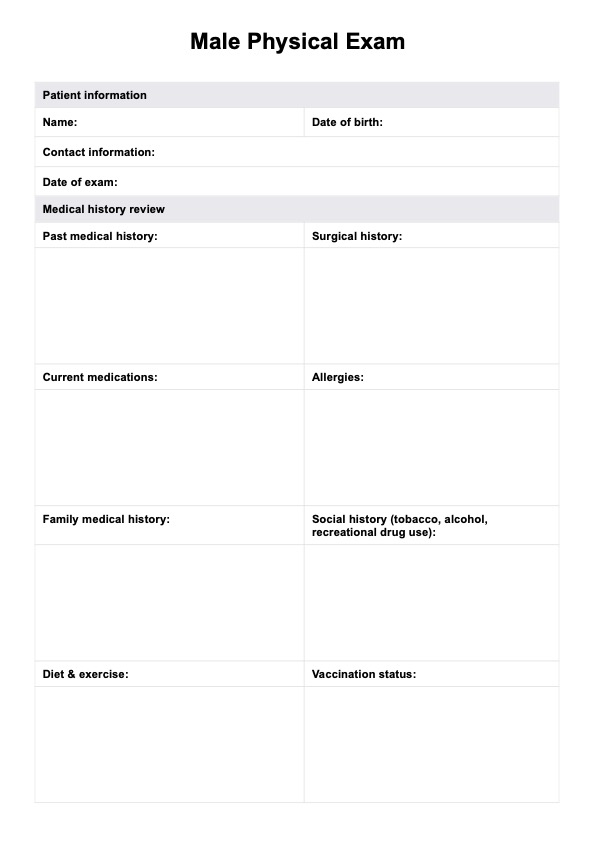A full physical exam for males is a comprehensive health assessment that includes vital signs, a medical and family history review, a head-to-toe physical examination, and age-appropriate screening tests. It is designed to detect early signs of disease, evaluate risk factors, and support preventive care planning.

Male Physical Exam
Streamline men’s health assessments with Carepatron’s Male Physical Exam Template, which covers vitals, screenings, documentation, and early disease detection.
Male Physical Exam Template
Commonly asked questions
Yes, doctors typically examine the genitals during a male physical exam to assess for issues such as testicular lumps, hernias, or signs of sexually transmitted infections. This is a standard part of ensuring men’s health and identifying problems that may go unnoticed.
Female doctors routinely perform male physical exams as part of standard clinical practice. Gender does not affect a physician’s qualifications to conduct a complete and professional health assessment.
EHR and practice management software
Get started for free
*No credit card required
Free
$0/usd
Unlimited clients
Telehealth
1GB of storage
Client portal text
Automated billing and online payments











